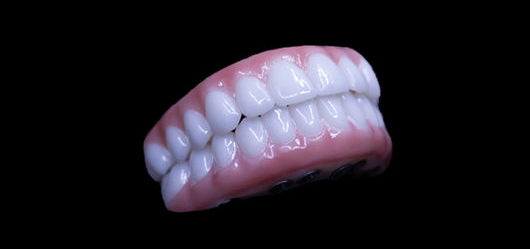Dental Sense Can Be Fun For Everyone
Dental Sense Can Be Fun For Everyone
Blog Article
Our Dental Sense PDFs
Table of ContentsDental Sense Can Be Fun For EveryoneDental Sense Can Be Fun For Anyone9 Easy Facts About Dental Sense ShownThe Buzz on Dental Sense
are medical tools operatively dental implanted right into the jaw to bring back a person's ability to chew or their look. They provide assistance for man-made (fake) teeth, such as crowns, bridges, or dentures. When a tooth is shed as a result of injury or disease, a person can experience issues such as quick bone loss, malfunctioning speech, or adjustments to eating patterns that lead to discomfort.Dental dental implant systems include an oral implant body and dental implant abutment and might additionally consist of a joint addiction screw. Dental implants. The oral implant body is surgically placed in the jawbone in place of the tooth's root. The oral implant joint is typically attached to the dental implant body by the joint fixation screw and expands through gum tissues into the mouth to support the connected synthetic teeth
(https://penzu.com/p/6de5c74cda18cc8f)Structure of The Oral Implant System picking oral implants, speak to your oral copyright concerning the prospective advantages and risks, and whether you are a candidate for the procedure. Things to think about: Your total wellness is an essential aspect in figuring out whether you are a great candidate for dental implants, how much time it will certainly take to recover, and for how long the implant may remain in area.
Smoking cigarettes might impact the recovery process and decrease the long-term success of the dental implant. The healing procedure for the implant body might take a number of months or longer, during which time you usually have a temporary abutment instead of the tooth. the dental implant treatment: Thoroughly follow the oral hygiene directions offered to you by your dental supplier.
Dental Sense Fundamentals Explained
Implant failing can result in the demand for one more surgery to deal with or replace the dental implant system. Recovers the capability to eat Recovers cosmetic look Aids keep the jawbone from diminishing due to bone loss Maintains the health of the bordering bone and gum tissues Helps maintain nearby (neighboring) teeth steady Boosts lifestyle Damage to bordering natural teeth throughout dental implant placement Injury to the surrounding tissues during surgical procedure, such as sinus opening Injury throughout surgical procedure (for example, fracture of surrounding jawbone) Inadequate function, such as seeming like the teeth do not bite together generally A sensation that the tooth hangs or twisting in position arising from an abutment screw loosening Implant body failing (looseness of the dental implant body) because of systemic infection, which might be extra most likely in patients with uncontrolled diabetes because of local infection in bone and gums sustaining the dental implant body as a result of postponed recovery, which may be most likely navigate to these guys in individuals that smoke Problem cleaning up the periodontals around the implant, resulting in bad oral health Unattended gum condition Post-surgical feeling numb because of nerve impingement or damage Always inform healthcare suppliers and imaging specialists that you have dental implants before any kind of magnetic vibration imaging (MRI) or x-ray procedures.
FDA is not knowledgeable about any negative events reported for MRI or x-ray treatments with dental implants. Oral implants systems are normally made from products that adhere to international consensus criteria of the International Organization for Standardization (ISO) or ASTM International. These standards have details of what makes a risk-free material.

An oral implant is a framework that replaces a missing tooth. With screw-like devices, the doctor inserts an implant right into the jawbone, and it acts as an anchor for a fabricated tooth, called a crown. A device called an abutment connects the man-made tooth to the oral implant. The crown is customized to fit the individual's mouth and match the shade of their teeth.
The 10-Minute Rule for Dental Sense
Some people are not eligible for oral implant surgery. It is for dental cosmetic surgeons to operate on people with: severe illnessuncontrollable metabolic diseasebone or soft tissue disease or infectionIf these issues are dealt with, a person can have the surgery. In, oral cosmetic surgeons avoid running on individuals with: If individuals with any one of the above go through dental implant surgery, there is a greater threat of the dental implant failing.

Oral implant surgery is an individualized process. It's not the exact same for everybody. Yet the adhering to gives a general introduction of what you can anticipate your dentist, dental doctor, periodontist or prosthodontist to do: Position the implant surgically. Give you time to recover. Affix the post and last crown, bridge or denture.
Next off, your specialist will carefully put the oral implant into your jaw. Lastly, your specialist will reposition your gums and shut the incision with stitches. If your implant is near the front of your mouth, your dental professional will make a short-lived tooth for you to put on up until you heal. That way, you won't have a void in your smile while you recoup.
The 10-Second Trick For Dental Sense
Throughout the healing phase, your jawbone needs to fuse to the dental implant. This process can take anywhere from three to nine months.
Once your dental implant heals, your dental professional can affix the joint (small port blog post) and your last remediation (crown, bridge or denture). This generally takes about one hour to complete and might call for a second minor surgical treatment. You should not really feel any kind of pain during your oral implant treatment since your service provider will utilize drug to numb your gums.
Report this page